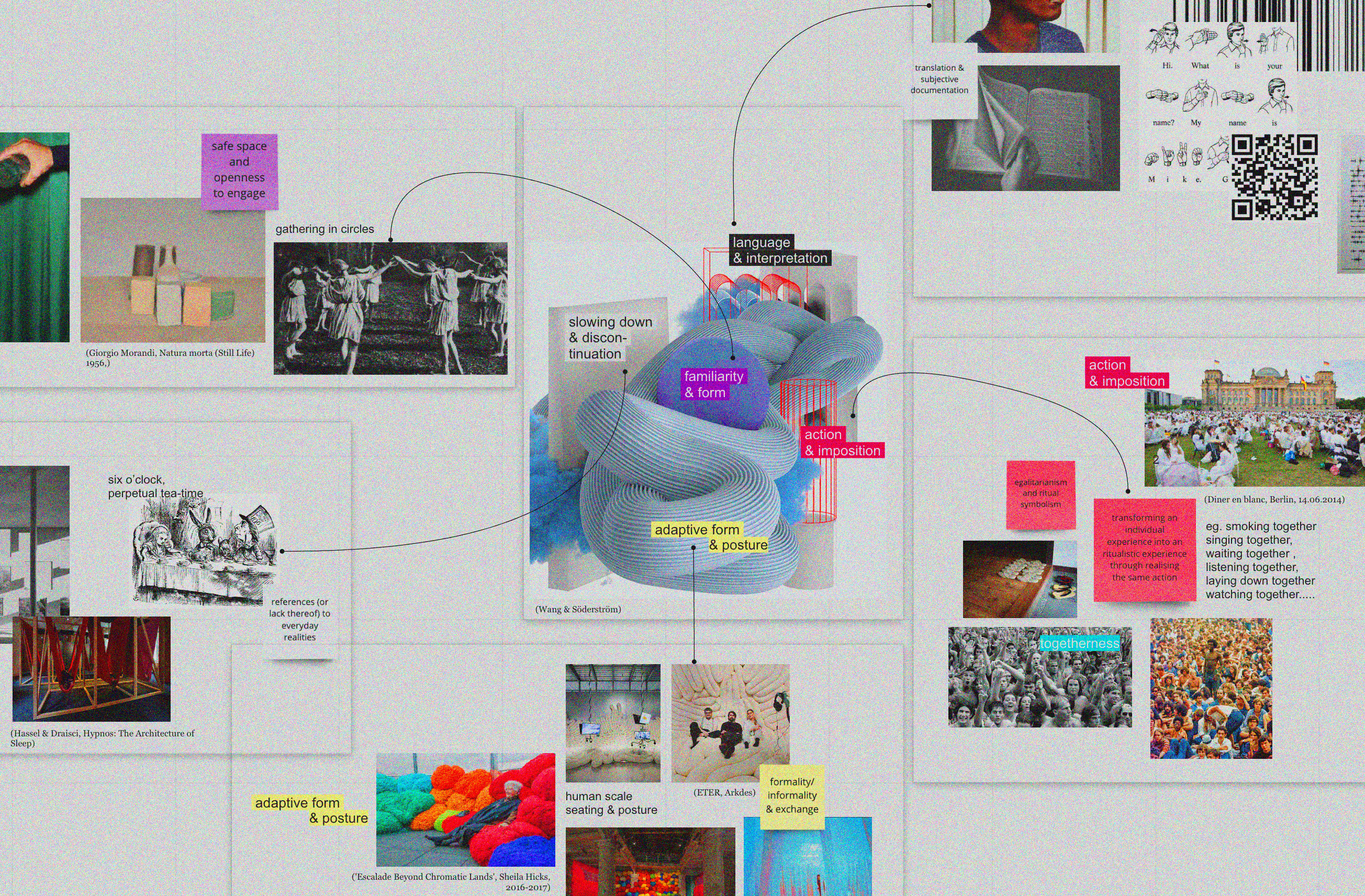‘Expression’, ‘interpretation’, and ‘vulnerability’... These relate the most to our personal experiences of feminism. These tools, we feel, are often bound together in the form of a ritual: a sequence of activities expressed through gestures, words, postures, objects, and rules.
00. Enter individually
01. Leave something of yours (shoes)
02. Take something of mine (crayons, pencils, pen)
03. Please use accordingly...(Your shoes are safe with me)
So deeply rooted are some rituals that they become a habit or tradition, a standalone entity. Historically speaking, many rituals in both religious and secular sense have tended to exclude women* or to allow women* to serve only in various subordinate roles. In our survival lounge, we would like to try breaking this tenet and work with an intersectional feminist ritual. Transforming the ritual into a spatial setting, we deepened our discussion around the theme of topography. We are interested in how nature, with its organic rules, formed very different features like hills and valleys yet enabled it to transition effortlessly to each other.
We would like to adapt the same possibilities to activate a feminist discourse in exploring one’s bodily postures (leaning, bending, moving, sitting, standing, , laying...). In the lounge, one’s expression in the form of different bodily postures mainly emerge as reaction to the curvy contours of the (z) axis. As one maneuvers the narrow and meandering space of the topography, the stiff posture has to be released. It is at this point that one begins to open up, unconsciously. This eventually reveals their own expressions from within.
Complementing such diverse morphology, we opted for a visually homogeneous surface that acts as a canvas and calls for leaving trace with the tools of pencils, pens, crayons, or markers. Just like the natural topography, the lounge organically grows through traces that were left, immersing one into a landscape of text and ideas.
Topography of the (x,y) axis inspire the spatial formation and the initiation phase, where it divides the lounge smoothly into smaller and bigger areas to accommodate gathering with oneself or with others.

